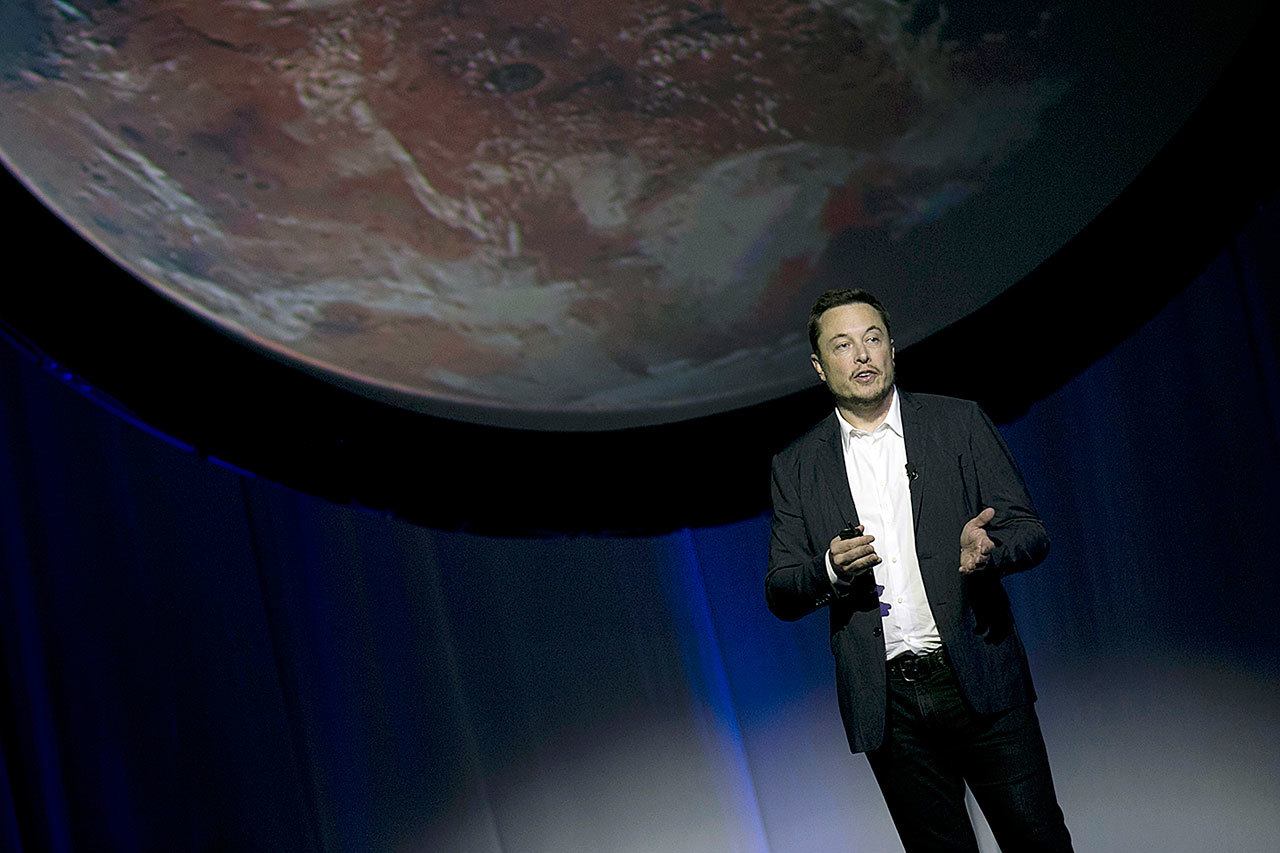By Joel Achenbach
The Washington Post
Elon Musk, the founder of SpaceX, last week finally unveiled his vision for the colonization of Mars. He’s going big and going soon, he insisted. He envisions a fleet of giant spaceships, standing 400 feet tall on the launchpad, carrying 100 people at a time in the coming decades to put a million people on Mars. The first human landing could happen in the next decade, Musk said.
Reality check: Putting even one person on Mars, never mind a million people, is going to be very hard. There is no single technological showstopper, but the risks are cumulative, the costs are incalculable, things go wrong, and any timeline that imagines humans on Mars in the next decade is magical thinking.
No one’s trying to dash anyone’s dreams here, but colonizing Mars isn’t simply a matter of rocket science. Musk and his colleagues have gotten good at rocketry (notwithstanding a couple of major failures in the past 15 months), but the biological part of a Mars mission is what’s so tricky: keeping people alive. We’re earthlings. We are not adapted to Mars, much less interplanetary space. Technology can potentially solve a lot of problems, but we don’t even know what all the problems are.
The United States is the only country to have landed a fully operational spacecraft on Mars. The largest U.S. payload – weighing roughly a ton – has been the Curiosity rover, which landed in 2012. Any human mission to Mars would need a payload on the order of 20 times as large. SpaceX has been working on supersonic retro-propulsion, and that holds promise for landing large payloads on Mars. The Red Dragon mission that Musk envisions in the next few years, with an unoccupied capsule, could demonstrate that technology, and you’d want to see it work a few times before putting humans onboard.
Musk’s plan assumes that there is a market for transportation to Mars. The government doesn’t have the budget for Mars colonization. Thus, the private sector would have to see Mars as an attractive business environment. Musk is willing to pour his wealth into the project, but this can’t work as a charitable endeavor. So SpaceX would sell tickets to Mars.
At first glance, it’s hard to see how this pencils out except under the most optimistic of assumptions about bringing down launch costs. And are there really huge numbers of people who would pay $200,000 (Musk’s target price for a seat on his spaceships) to go to Mars? It’s not the most hospitable environment. Among other amenities lacking on Mars is air. It’s really cold. If you crave adventure, maybe start with a trip to Antarctica.
I asked Gentry Lee, a science fiction author and the chief engineer for solar system exploration at NASA’s Jet Propulsion Laboratory, what he thought about Musk’s plan for colonizing Mars. Lee was a key figure in the Viking mission to Mars 40 years ago and knows a lot about the challenges of sending something to Mars. He replied by email:
“I think Elon’s vision is exciting. But I think it is also important that people have some understanding of what it would take to implement such a vision. It would be a gigantic human engineering endeavor, greater in scope, scale, and cost than the Manhattan Project. To be successful the endeavor would have to develop and infuse new technologies at a much faster rate than we have ever achieved before on any project.”
Talk to us
> Give us your news tips.
> Send us a letter to the editor.
> More Herald contact information.

























